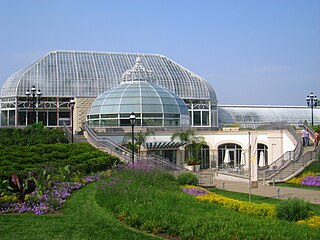
Pittsburgh is a city in the Commonwealth of Pennsylvania and the county seat of Allegheny County. It is the most populous city in both Allegheny County and Western Pennsylvania, the second-most populous city in Pennsylvania after Philadelphia, and the 68th-most populous city in the U.S. with a population of 302,971 as of the 2020 census. It is the largest city of the Greater Pittsburgh metropolitan area of Western Pennsylvania; its population of 2.457 million is the largest in both the Ohio Valley and Appalachia, the second-largest in Pennsylvania, and the 26th-largest in the U.S. It is the principal city of the greater Pittsburgh–Weirton–Steubenvillle combined statistical area that extends into Ohio and West Virginia.

Penn Hills is a township with home rule status in Allegheny County, Pennsylvania, United States. The population was 41,059 as of the 2020 census. A suburb of Pittsburgh, Penn Hills is the second-largest municipality in Allegheny County.

Wilkinsburg is a borough in Allegheny County, Pennsylvania, United States. The borough has a population of 14,349 as of the 2020 census. Wilkinsburg is located as part of the Pittsburgh metropolitan area. The borough was named for John Wilkins Jr., a United States Army officer who served as Quartermaster General of the United States Army from 1796 to 1802.
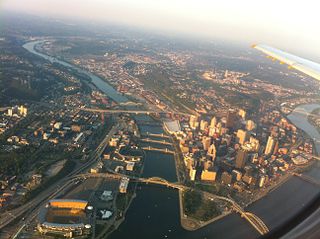
The Hill District is a grouping of historically African American neighborhoods in the City of Pittsburgh, Pennsylvania. Beginning in the years leading up to World War I, "the Hill" was the cultural center of black life in the city and a major center of jazz. Despite its cultural and economic vibrancy, in the mid-1950s a substantial area was slated for redevelopment, displacing about 8,000 individuals.

The Carnegie Library of Pittsburgh is the public library system in Pittsburgh, Pennsylvania. Its main branch is located in the Oakland neighborhood of Pittsburgh, and it has 19 branch locations throughout the city. Like hundreds of other Carnegie libraries, the construction of the main library, which opened in 1895, and several neighborhood branches, was funded by industrialist Andrew Carnegie. The Pittsburgh area houses the first branches in the United States.
Community College of Allegheny County (CCAC) is a public community college in Allegheny County, Pennsylvania. With four campuses and four centers, the college offers associate degrees, certificates, and diplomas.

John Edgar Wideman is an American novelist, short story writer, memoirist, and essayist. He was the first person to win the PEN/Faulkner Award for Fiction twice. His writing is known for experimental techniques and a focus on the African-American experience.
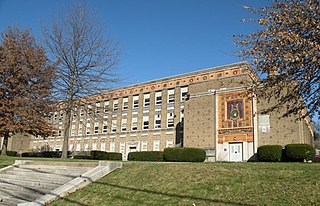
Lincoln–Lemington–Belmar is a neighborhood in Pittsburgh, Pennsylvania. It is located in the northeastern section of the city and spans the Allegheny River. Lincoln–Lemington–Belmar houses PBF 15 Engine, and is covered by PBP Zone 5 and the Bureau of EMS Medic 1.

East Liberty is a neighborhood in Pittsburgh, Pennsylvania's East End. It is bordered by Highland Park, Morningside, Stanton Heights, Garfield, Friendship, Shadyside and Larimer, and is represented on Pittsburgh City Council by Councilwoman Deborah Gross and Rev. Ricky Burgess. One of the most notable features in the East Liberty skyline is the East Liberty Presbyterian Church, which is an area landmark.
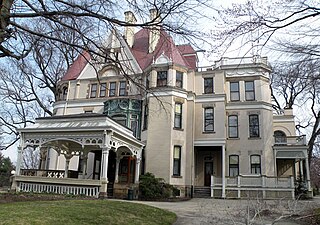
Point Breeze, or South Point Breeze, is a largely residential neighborhood in Pittsburgh, Pennsylvania, USA. The community was named after a tavern once located there.
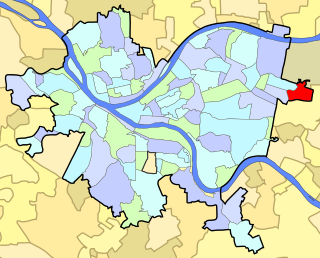
East Hills is a neighborhood in the east side of Pittsburgh, Pennsylvania, United States. Its ZIP Code is 15221. It has representation on Pittsburgh City Council by the council member for District 9.
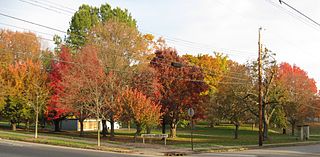
North Point Breeze is a mostly residential neighborhood that is located in the East End of Pittsburgh, Pennsylvania. It has a zip code of 15208, and representation on Pittsburgh City Council by the council member for District 9.
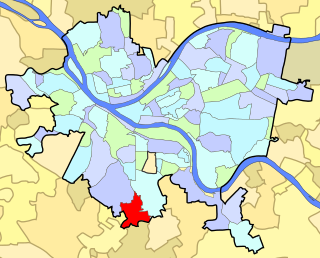
Overbrook is a neighborhood on Pittsburgh, Pennsylvania's South Hills area. It has zip codes of 15227, 15234 and 15210 and has representation on Pittsburgh City Council by the council member for District 4. Originally called Fairhaven, the name was changed to Overbrook when breaking away from Baldwin Township to become a borough. Overbrook is located at the edge of the city, south of Downtown, and is surrounded by the city neighborhoods Brookline and Carrick and the boroughs of Castle Shannon and Whitehall. Overbrook Borough was one of the last annexed into the City of Pittsburgh. The historic Overbrook Community Center retains its borough origins and is still used by the community.

Regent Square is a neighborhood in the East End of Pittsburgh, Pennsylvania, United States. According to its civic association, it "includes portions of the municipalities of Pittsburgh, Edgewood, Swissvale and Wilkinsburg". It is also the name of one of the 90 neighborhoods within the City of Pittsburgh's limits, which leads to some confusion among residents. In 2017, it was named the #1 neighborhood to live in Pittsburgh and the #17 best neighborhood in the United States by Niche.com.

West End Village is a neighborhood in Pittsburgh, Pennsylvania's west city area. It has a zip code of 15220, and has representation on Pittsburgh City Council by the council member for District 2.

Transportation in Pittsburgh, Pennsylvania is different than in many other major American cities. A large metropolitan area that is surrounded by rivers and hills, Pittsburgh has an infrastructure system that has been built out over the years to include roads, tunnels, bridges, railroads, inclines, bike paths, and stairways; however, the hills and rivers still form many barriers to transportation within the city.

Pennsylvania Route 380, also known as J.F. Bonetto Memorial Highway and within the city of Pittsburgh Bigelow Boulevard, Baum Boulevard and Frankstown Road, is a 32.80 mi (52.8 km) long state highway in western portions of the U.S. state of Pennsylvania. The western terminus of the route is at Interstate 579 in downtown Pittsburgh near PPG Paints Arena. The eastern terminus is at Pennsylvania Route 286 in Bell Township, near the hamlet of Wakena.
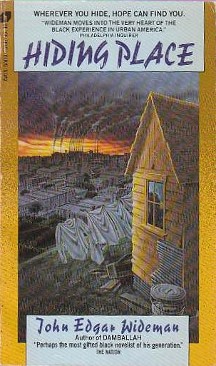
Hiding Place is a novel by the American writer John Edgar Wideman set in Pittsburgh, Pennsylvania, during the 1970s. It was first published in 1981 by Avon Books in New York, and subsequently in London by Allison & Busby in 1984.

Sent for You Yesterday is a novel by the American writer John Edgar Wideman, first published in 1983, set in Pittsburgh, Pennsylvania, during the 1970s.
























